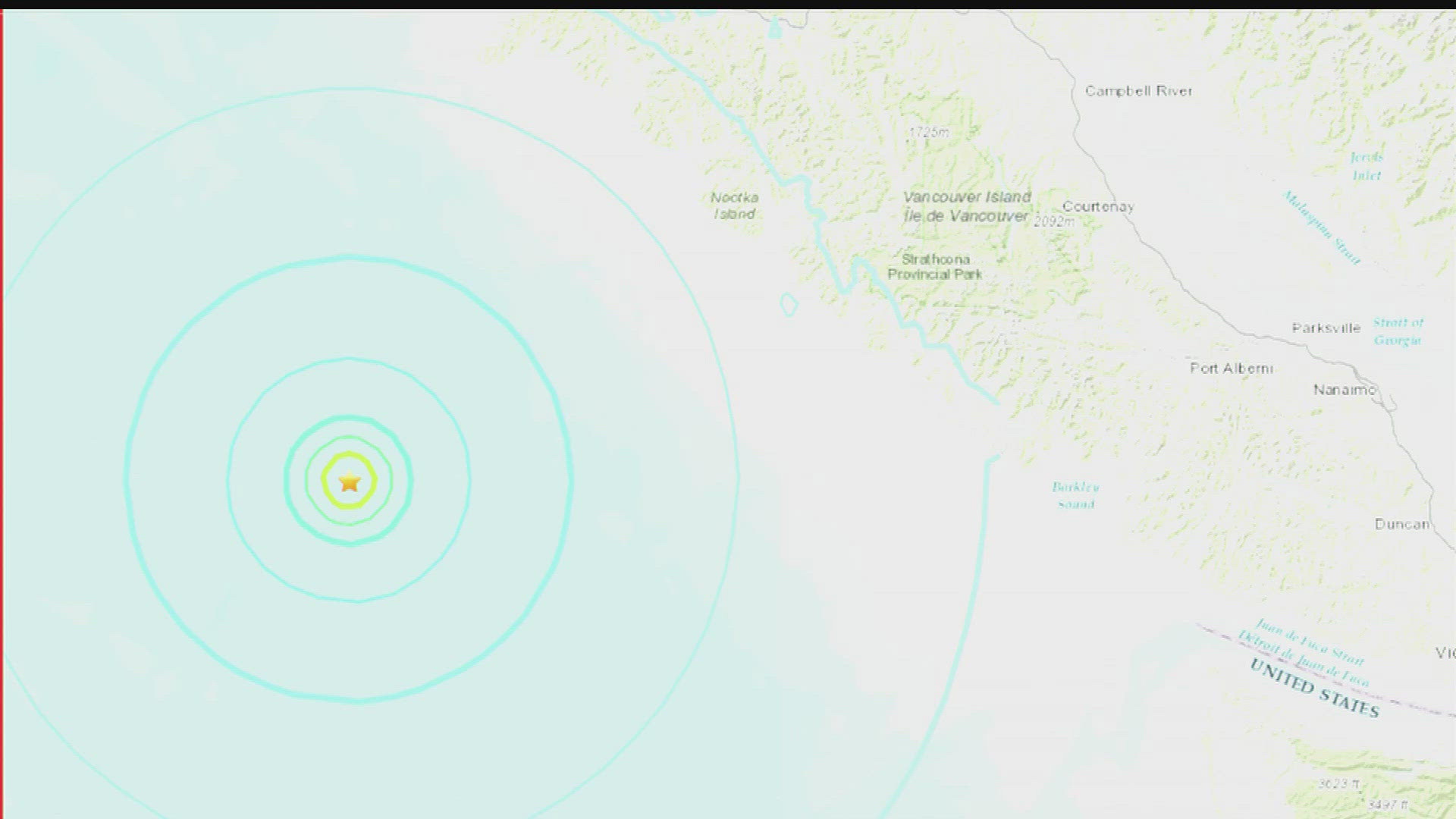TOFINO, BC — After a series of seismic activity off the coast of Vancouver Island last week, the largest earthquake of 2024 in the region struck Thursday morning.
A 6.4 magnitude earthquake struck about 120 miles southwest of Port Alice in British Columbia just after 8 a.m. Thursday, per the United States Geological Survey (USGS). It is the largest earthquake to strike the region in 2024 to date.
This comes after a flurry of smaller earthquakes were recorded in the same relative area out in the ocean off the coast of Vancouver Island. A Canadian geologist told KING 5 last week that the activity in the area was not out of the ordinary, as many of the quakes were concentrated "near the intersection of the northern Juan de Fuca Spreading Ridge, the Sovanco Fracture Zone, and the Nootka Fault Zone."
Despite the elevated magnitude, no tsunami alert was issued for any of the coastal areas surrounding the earthquake's area by the National Weather Service.
The earthquake prompted a ShakeAlert for parts of the Olympic Peninsula and Puget Sound, per the USGS.
Earthquakes around western Washington
Many earthquakes in Washington state are linked to the motion of the Juan de Fuca Plate and the North American Continental Plate moving against each other as the Juan de Fuca Plate slips beneath the North American continent, according to the Pacific Northwest Seismic Network. This is called the Cascadia Subduction Zone.
According to the Washington State Department of Natural Resources, earthquakes happen in Washington every day, but most are too small to be felt. The state has the second highest risk in the U.S. of experiencing a large and damaging earthquake because of its geologic setting.
The Pacific Northwest typically experiences three types of earthquakes:
- Shallow fault quakes: Ruptures in faults located in the upper 18 miles of the Earth's crust. These earthquakes typically last 20 to 60 seconds and shaking is localized to the area near the fault, according to the DNR.
- Deep earthquakes: Deep faults happen when two tectonic plates collide and one plate slips beneath the other one. These quakes can impact a large area but are less intense.
- Subduction zone earthquakes: This earthquake results from the tension of an oceanic plate slipping beneath a continental plate. When enough stress builds, the fault will rupture, releasing a massive amount of energy. The Cascadia Subduction Zone has the potential for these types of earthquakes and has ruptured in the past. It is one of Washington state's biggest hazards, according to DNR.

